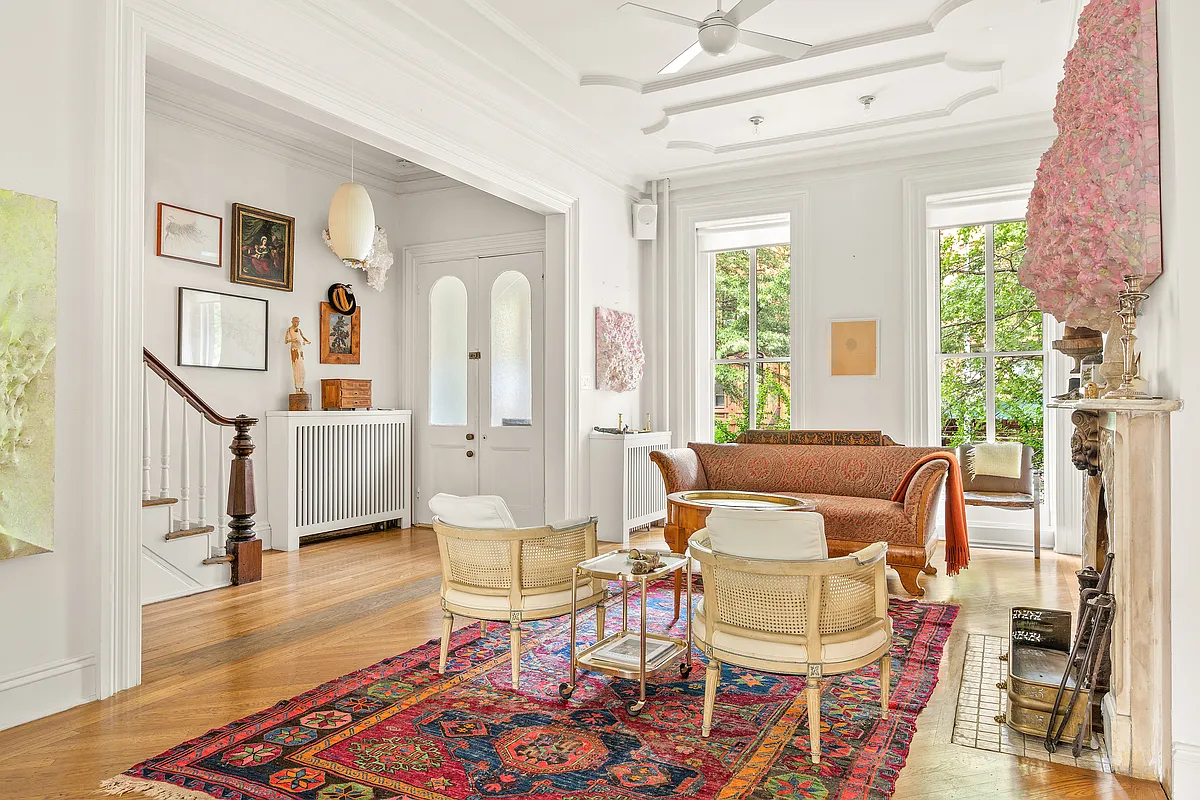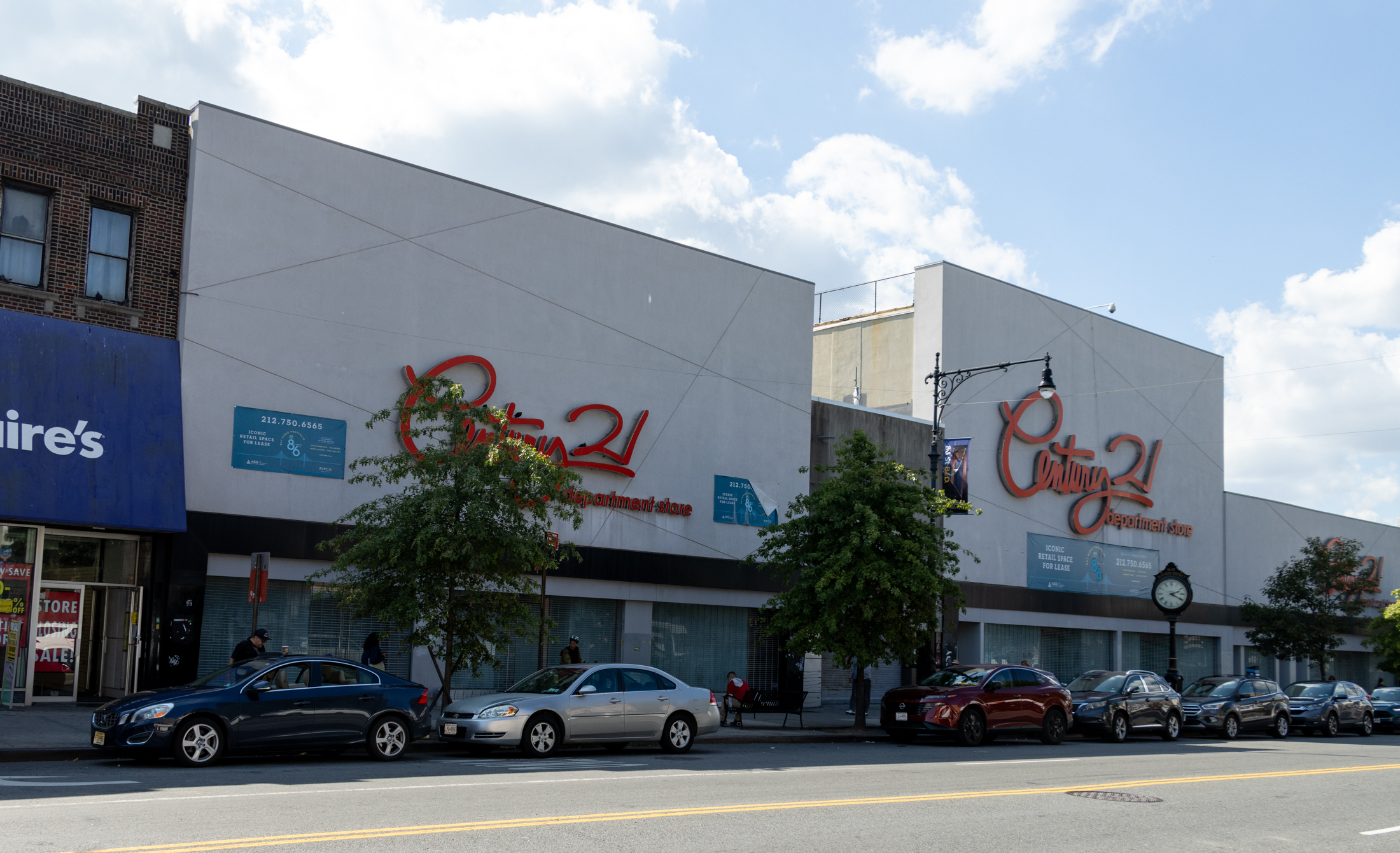Condo Market: You Can't Handle the Truth!
“The truth is that people can’t take the truth,” Robert Levine, the president of RAL Cos., is quoted as saying in a Sun article about how the city’s condo market is (brace yourself!) not as healthy as it once was. The point of the article seems to be that though the press has instilled “fear”…

 “The truth is that people can’t take the truth,” Robert Levine, the president of RAL Cos., is quoted as saying in a Sun article about how the city’s condo market is (brace yourself!) not as healthy as it once was. The point of the article seems to be that though the press has instilled “fear” in people (another Levine quote) about the value of real estate as an investment, condos are still worth buying because the city’s market will eventually rebound. Here’s the evidence the story gathers about condo sales slowing: financing is shaky (“As transaction volume dries up, and liquidity remains nonexistent, property values will fall, and banks will begin foreclosures,” say Kevin Comer, the president of Beck Street Capital. “The kid gloves will come off, and it won’t matter if you own property at Fifth Avenue and 58th Street or Williamsburg, the banks will be brutal as they all struggle to survive and avoid Bear Stearns fate. The busted condo deals will be the first to fall given their short term financing.”); a ton of prospective buyers are lowballing offering prices, says one developer, which means inventory isn’t moving unless a sponsor’s willing to make a deal; after buzz fades on a condo that’s just put up listings, sales are languishing, says Gary Malin, the president of Citi Habitats. So wait, what’s the truth that we can’t take? Oh, right—now (or very soon) may be the time to buy. “Now more than ever its location, location and location,” says Beck Street Capital’s Kevin Comer. “Long term, real estate remains a great place to invest capital, especially in New York City, and we are headed for one of the best buying opportunities of my lifetime.” Consider yourself truthified.
“The truth is that people can’t take the truth,” Robert Levine, the president of RAL Cos., is quoted as saying in a Sun article about how the city’s condo market is (brace yourself!) not as healthy as it once was. The point of the article seems to be that though the press has instilled “fear” in people (another Levine quote) about the value of real estate as an investment, condos are still worth buying because the city’s market will eventually rebound. Here’s the evidence the story gathers about condo sales slowing: financing is shaky (“As transaction volume dries up, and liquidity remains nonexistent, property values will fall, and banks will begin foreclosures,” say Kevin Comer, the president of Beck Street Capital. “The kid gloves will come off, and it won’t matter if you own property at Fifth Avenue and 58th Street or Williamsburg, the banks will be brutal as they all struggle to survive and avoid Bear Stearns fate. The busted condo deals will be the first to fall given their short term financing.”); a ton of prospective buyers are lowballing offering prices, says one developer, which means inventory isn’t moving unless a sponsor’s willing to make a deal; after buzz fades on a condo that’s just put up listings, sales are languishing, says Gary Malin, the president of Citi Habitats. So wait, what’s the truth that we can’t take? Oh, right—now (or very soon) may be the time to buy. “Now more than ever its location, location and location,” says Beck Street Capital’s Kevin Comer. “Long term, real estate remains a great place to invest capital, especially in New York City, and we are headed for one of the best buying opportunities of my lifetime.” Consider yourself truthified.
Believe It: Condo Sales Slow [NY Sun]
Still from youtube.





WALL STREET JOURNAL
The Housing Crisis Is Over
By CYRIL MOULLE-BERTEAUX
May 6, 2008; Page A23
The dire headlines coming fast and furious in the financial and popular press suggest that the housing crisis is intensifying. Yet it is very likely that April 2008 will mark the bottom of the U.S. housing market. Yes, the housing market is bottoming right now.
How can this be? For starters, a bottom does not mean that prices are about to return to the heady days of 2005. That probably won’t happen for another 15 years. It just means that the trend is no longer getting worse, which is the critical factor.
Most people forget that the current housing bust is nearly three years old. Home sales peaked in July 2005. New home sales are down a staggering 63% from peak levels of 1.4 million. Housing starts have fallen more than 50% and, adjusted for population growth, are back to the trough levels of 1982.
Furthermore, residential construction is close to 15-year lows at 3.8% of GDP; by the fourth quarter of this year, it will probably hit the lowest level ever. So what’s going to stop the housing decline? Very simply, the same thing that caused the bust: affordability.
The boom made housing unaffordable for many American families, especially first-time home buyers. During the 1990s and early 2000s, it took 19% of average monthly income to service a conforming mortgage on the average home purchased. By 2005 and 2006, it was absorbing 25% of monthly income. For first time buyers, it went from 29% of income to 37%. That just proved to be too much.
Prices got so high that people who intended to actually live in the houses they purchased (as opposed to speculators) stopped buying. This caused the bubble to burst.
Since then, house prices have fallen 10%-15%, while incomes have kept growing (albeit more slowly recently) and mortgage rates have come down 70 basis points from their highs. As a result, it now takes 19% of monthly income for the average home buyer, and 31% of monthly income for the first-time home buyer, to purchase a house. In other words, homes on average are back to being as affordable as during the best of times in the 1990s. Numerous households that had been priced out of the market can now afford to get in.
The next question is: Even if home sales pick up, how can home prices stop falling with so many houses vacant and unsold? The flip but true answer: because they always do.
In the past five major housing market corrections (and there were some big ones, such as in the early 1980s when home sales also fell by 50%-60% and prices fell 12%-15% in real terms), every time home sales bottomed, the pace of house-price declines halved within one or two months.
The explanation is that by the time home sales stop declining, inventories of unsold homes have usually already started falling in absolute terms and begin to peak out in “months of supply” terms. That’s the case right now: New home inventories peaked at 598,000 homes in July 2006, and stand at 482,000 homes as of the end of March. This inventory is equivalent to 11 months of supply, a 25-year high – but it is similar to 1974, 1982 and 1991 levels, which saw a subsequent slowing in home-price declines within the next six months.
Inventories are declining because construction activity has been falling for such a long time that home completions are now just about undershooting new home sales. In a few months, completions of new homes for sale could be undershooting new home sales by 50,000-100,000 annually.
Inventories will drop even faster to 400,000 – or seven months of supply – by the end of 2008. This shift in inventories will have a significant impact on prices, although house prices won’t stop falling entirely until inventories reach five months of supply sometime in 2009. A five-month supply has historically signaled tightness in the housing market.
Many pundits claim that house prices need to fall another 30% to bring them back in line with where they’ve been historically. This is usually based on an analysis of house prices adjusted for inflation: Real house prices are 30% above their 40-year, inflation-adjusted average, so they must fall 30%. This simplistic analysis is appealing on the surface, but is flawed for a variety of reasons.
Most importantly, it neglects the fact that a great majority of Americans buy their houses with mortgages. And if one buys a house with a mortgage, the most important factor in deciding what to pay for the house is how much of one’s income is required to be able to make the mortgage payments on the house. Today the rate on a 30-year, fixed-rate mortgage is 5.7%. Back in 1981, the rate hit 18.5%. Comparing today’s house prices to the 1970s or 1980s, when mortgage rates were stratospheric, is misguided and misleading.
This is all good news for the broader economy. The housing bust has been subtracting a full percentage point from GDP for almost two years now, which is very large for a sector that represents less than 5% of economic activity.
When the rate of house-price declines halves, there will be a wholesale shift in markets’ perceptions. All of a sudden, the expected value of the collateral (i.e. houses) for much of the lending that went on for the past decade will change. Right now, when valuing the collateral, market participants including banks are extrapolating the current pace of house price declines for another two to three years; this has a significant impact on the amount of delinquencies, foreclosures and credit losses that lenders are expected to face.
More home sales and smaller price declines means fewer homeowners will be underwater on their mortgages. They will thus have less incentive to walk away and opt for foreclosure.
A milder house-price decline scenario could lead to increases in the market value of a lot of the securitized mortgages that have been responsible for $300 billion of write-downs in the past year. Even if write-backs do not occur, stabilizing collateral values will have a huge impact on the markets’ perception of risk related to housing, the financial system, and the economy.
We are of course experiencing a serious housing bust, with serious economic consequences that are still unfolding. The odds are that the reverberations will lead to subtrend growth for a couple of years. Nonetheless, housing led us into this credit crisis and this recession. It is likely to lead us out. And that process is underway, right now.
Mr. Moulle-Berteaux is managing partner of Traxis Partners LP, a hedge fund firm based
11:22 + 11:28 = delusional
Keep on renting in ignorant bliss
Before people start ranting at 11:22 that renting for $2250 would mean you’d be throwing away $2250 a month so you’d rather be spending $3250 a month in morgage costs consider this.
The $2250 rent includes the cost of heat, hot water, real estate taxes, and insurance. The $3250 mortgage payment does not include those costs and would be additional. The $2250 rent also includes the cost of repairs and maintenance but those costs would also be additional to $3250 mortgage. The $3250 does include interest payments which the $2250 does not. There are a lot of advantages to renting, you can keep your capital and invest it, you don’t throw away money on interest, you don’t have to pay closing costs etc.
Please just don’t argue paying rent is throwing that money away because I can tell you as a landlord, I put the rent money to a lot of things like heat, hot water, insurance, taxes etc. Those costs are substantial.
People looking for a deal now better jump in, they are going to wake up one day real soon and find that the good deal days are over. Quit trying to time the market and buy one now before its too late, Thier are alot of good deals in Bklyn now. Within 5 years you’ll double your money with this brooklyn renniassance going on. Take it for what its worth, if you snooze u lose.
I agree with you 11:22, but you have to take the tax savings from the mortgage interest deduction into account. Still, it is STILL usually cheaper to rent now, with these prices, even when you take that into account.
Sure, the market is saturated with condos. And yes, they are almost all high rises and in places like downtown and 4th Ave. Antything that isn’t, and is in a smaller building on a brownstone street, is going to go faster, is my guess.
But the article referenced doesn’t make sense. It does not make sense to buy into an unfinished condo building (or just finished) when the market is down (not if you want to live there – I can’t speak to investor/speculators.) If the developer still needs money from banks and isn’t selling apartments fast enough to keep the banks happy, the finishing up may be long and incomplete. Even if finished, if others aren’t buying, you may end up in a rental or mostly rental building (fine, as long as you prepared for that.) I’d stick to established condo buildings if buying in this sort of market. And even there, financially, you be better off in a coop (though I’d never buy a coop again myself) – because you don’t know the precarious financings of the other owners in you condo and may yet face foreclosures in the building, which will have an impact on you (that’s unlikely in a coop because they don’t generally allow risky mortgages or creative financing.)
Wasn’t Soros one of the five guys who made a billion dollars this year in the financial industry? He can’t be that dumb.
The problem is that buying has become much more expensive than renting. I went with a friend to look at condo in Bed Stuy. 2bdrm w/ garden for 425K. Estimated mortgage with maintenance was 3250. There is no way in hell you could ever rent that place out for 3250. And no way in hell that place should sell over 310K.
I saw a place in Clinton Hill for 575K- same story. People do the math- if you can save more than a 1k per month by renting then buying is not a good deal!
“This shows how smart Two Trees was that they converted 110 Livingston to rental. It’s a really nice rental building.”
9 units at 110 Livingston went rental.
I don’t call that a rental building.